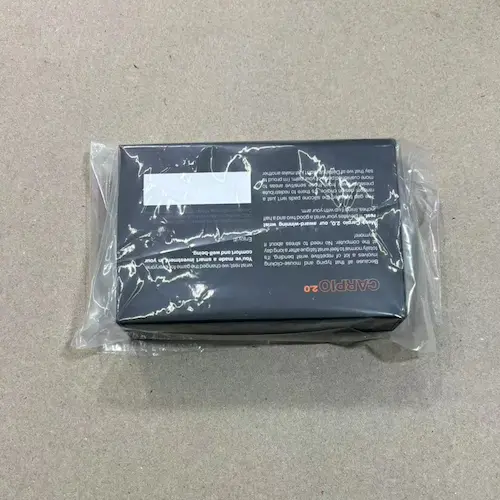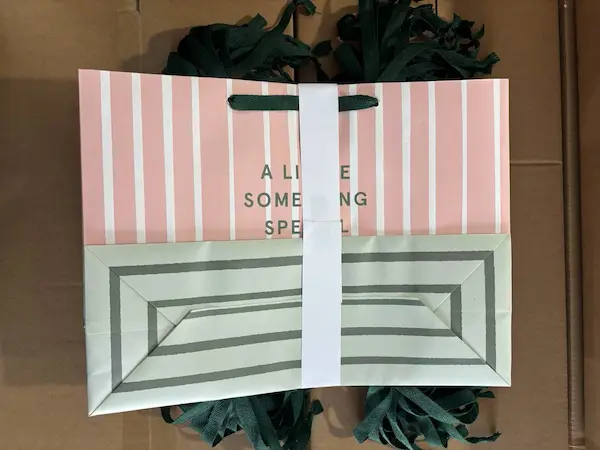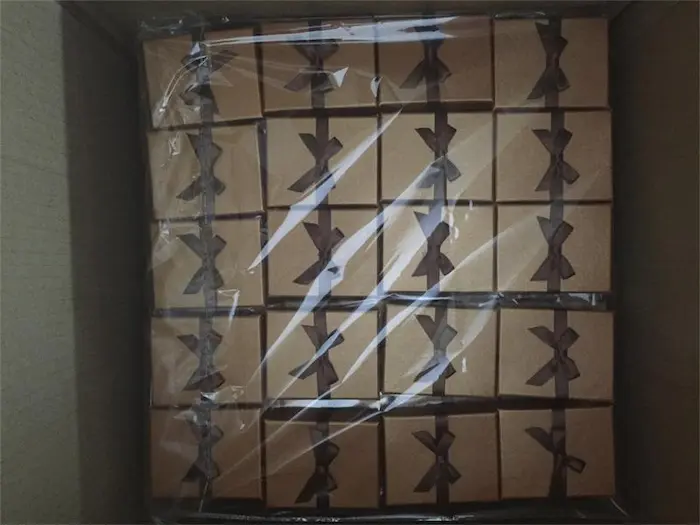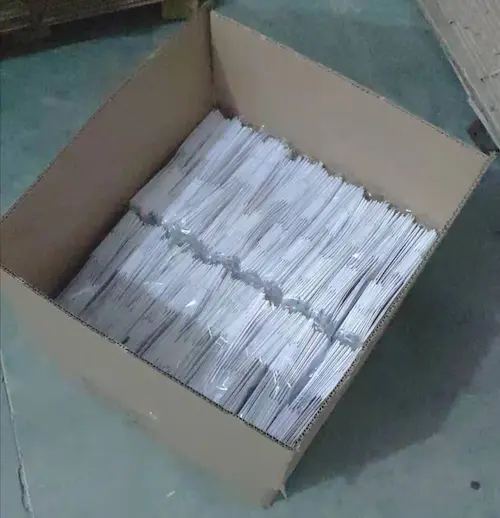Packing Method of Custom Packaging
Discover the right packing method of customized packaging for handmade boxes with APP’s custom packaging guide. Ensure luxury paper bags & high-end boxes arrive safely and cost-effectively. See our 5-step success checklist!
Common Packing Method
Safe Outer Packing
- Currugated Cartons
- Kraft Wrapping Paper
- Wood Cartons
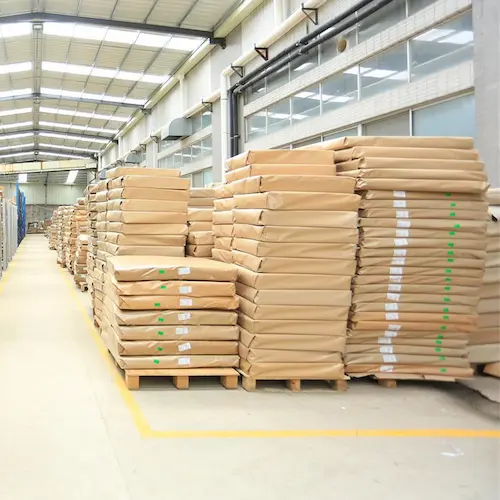
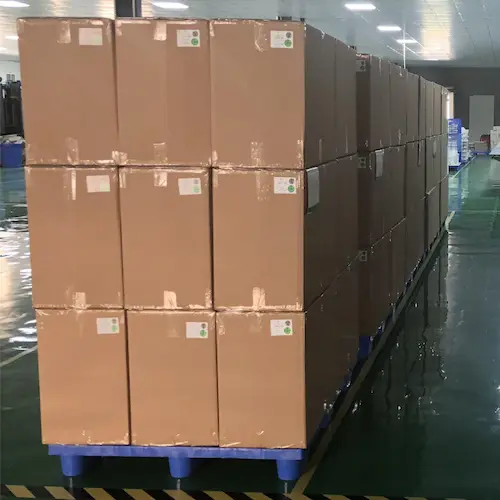
Shipping Packing
- Plastic Pallet + Stretch Film
- Wood Pallet + Stretch Film
- Wood Packaging


Pros and Cons of outer packing for each packagings
| Packing Method | Material | Pros | Cons |
|---|---|---|---|
| Plastic Bag (PE Bag) | Polyethylene | ★ Low cost ($0.05–0.2/bag) | ▲ Non-recyclable |
| ★ Dust & moisture resistant | ▲ Fragile | ||
| Corrugated Outer Carton | 3-5 Ply Board | ★ High crush resistance | ▲ Adds volume/weight |
| ★ Customizable printing | ▲ Higher freight cost | ||
| Strapping (PP/PET) | Polypropylene/Polyester | ★ Low cost ($0.5–2/roll) | ▲ Requires tools |
| ★ Secures heavy loads | ▲ May damage edges | ||
| Pallet + Stretch Film | Wood/Plastic Pallet + PE Film | ★ Forklift-friendly | ▲ Requires storage space |
| ★ Prevents load shifting | ▲ Equipment investment | ||
| Kraft Paper Wrapping | Recycled Kraft | ★ Eco-friendly & biodegradable | ▲ Not waterproof |
| ★ High tear resistance | ▲ Plain appearance | ||
| Bubble Wrap Bag | PE Air Cushion | ★ Shock absorption | ▲ Plastic waste |
| ★ Lightweight | ▲ Higher cost ($0.5–3/bag) | ||
| Heat Seal Tape | Adhesive Composite | ★ Tamper-evident seal | ▲ Needs heat sealer |
| ★ Clean finish | ▲ Material restrictions |
5 Simple Steps to Select the Ideal Packing Method of Custom Packaging
Choosing the right packing method of custom packaging ensures your products like luxury paper bags and high-end paper boxes arrive safely, cost-effectively, and aligned with your brand values. Allen Paper Products (APP) breaks down the process into five actionable steps for custom packaging success.
Step 1: Define Your Product Requirements
- Fragility: Delicate items (glass, ceramics, electronics) need protective packing methods of custom packaging like foam, air cushions, or corrugated dividers.
- Size/Weight: Heavy or oversized items (furniture, machinery) require reinforced custom packaging with double-walled boxes or wooden crates.
- Value: High-value goods (luxury watches, jewelry) demand tamper-evident seals, RFID tags, or insurance-backed secure packing solutions.
Pro Tip: Test your packaging with a “drop test” to ensure durability for fragile items.
Step 2: Analyze Shipping Destinations & Logistics
- Domestic Shipping: Opt for cost-effective ground transport with recyclable mailers or standard boxes.
- International Shipping: Use climate-controlled packing methods of custom packaging for long hauls and comply with ISPM-15 wood regulations.
- Last-Mile Needs: Urban deliveries may require compact, lightweight custom packaging for easy handling; rural areas prioritize durability.
Pro Tip: Partner with carriers offering real-time tracking for high-priority shipments.
Step 3: Prioritize Sustainability & Brand Alignment
- Eco-Friendly Materials: Choose FSC-certified paper, biodegradable fillers, or reusable packing methods of custom packaging for eco-conscious audiences.
- Branding Integration: Use minimalist designs for luxury brands or bold, recyclable prints for eco-focused companies.
- Reusability: Design custom packaging that doubles as storage (e.g., magnetic-lock boxes) to enhance customer experience.
Pro Tip: 73% of consumers prefer brands with reusable or recyclable packaging—leverage this in your strategy.
Step 4: Evaluate Cost vs. Efficiency
- Budget Constraints: Use hybrid solutions like air freight for urgent orders and sea freight for bulk cost-effective packing methods of custom packaging.
- Volume Discounts: Order 500+ units of custom packaging to reduce per-unit costs by 25-40%.
- Hidden Costs: Factor in duties, insurance, and returns management for international shipments.
Pro Tip: APP’s bulk-ordering portal provides instant quotes for materials, labor, and logistics.
Step 5: Test & Optimize
- Prototype Testing: Simulate transit conditions (vibration, humidity) to refine protective packing methods of custom packaging.
- Customer Feedback: Survey users on unboxing experience—adjust designs for easier opening or sturdier builds.
- Continuous Improvement: Use AI analytics to track damage rates and shipping costs, refining methods quarterly.
Pro Tip: Integrate NFC tags into custom packaging to collect real-time feedback via QR code scans.
FAQ
Q1: What if my boxes are damaged during shipping?
A: Contact us immediately and share some photos and videos about the damage. We will call the shipping company to file a claim and propose compensation plans within 8 hours.
Q2: Are the materials recyclable and environmentally friendly?
A: Of course! All paper/cardboard is widely recyclable. Our processes comply with municipal recycling standards.
Q3: How to resolve quality issues with my delivered order?
A: Contact support within 24 hours of delivery. Provide photos, batch numbers, and defect details. We will investigate promptly and offer replacements, discounts, or refunds per our policy.
Q5: How to prevent scratches during production and shipping?
A: Each paper boxes are packed individually in a poly bag and shipped in sturdy strong outer cartons. Corrugated boxes are palletized and stretch-wrapped. Special scratch-resistant coatings (like soft-touch) are great helpful.
Q6: How to test and compare material thicknesses?
A: Folding cartons: Measured in points/pt or GSM (e.g., 18pt, 24pt, 300gsm). Corrugated: Measured by ECT (Edge Crush Test) rating or flute type/burst strength (e.g., B-Flute, 200# ECT). Consult our material spec sheets. The thickness betweet samples and mass production much be same!
Q7: How many days quality guaranteed? What to do if we're not happy for the quality?
A: 60-day quality guarantee. Unacceptable quality? We will promptly remake or provide a suitable resolution if the quality is not good enough.
Q4: Do you have warehousing and shipping services?
A: Yes! APP not only manufactures custom packaging but also ships orders directly. We also offer storage/consolidation services to reduce shipping costs.
Q8: Are the boxes and bags suitable for reuse?
A: Yes, our shipping boxes are able to reuse and recycling. It’s advised against using them again to ship products.

